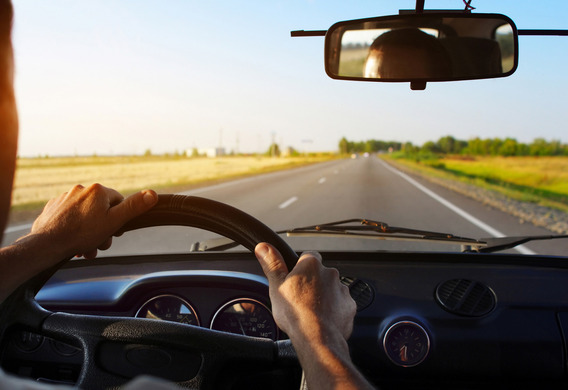
The modern automakers trust the driver less. The development of electronics has led to the fact that different systems take on more and more functions of the driver. In the old days, for example, to quickly turn into a turnaround without skulk, it was sometimes necessary to work hard and hard to drive, and lever arm, and all three pedals. Now it seems to be in the past, as all the most difficult work is ready to take the electronic assistants-including the system of stabilization of the movement. The names can be different-ESP, ESC, DSC, RDC, RSC and others, depending on the manufacturer, but the essence remains one-perfectly fitting the trajectory of the car in the direction of the wheel.
All for the best.
Mercedes-Benz, which worked with Bosch for five years (from 1987 to 1992), was the founder of the electronic vehicle stabilization system. At the same time, the first car, which was equipped with a similar system, was Diamante from Mitsubishi. For the first time, the model designers have integrated the traction control and exchange rate stability systems into the "one vial" called TCL. However, the imperfection of the device did not contribute to its wide dissemination. By 1995, Mercedes and Bosch had completed the development of their system and called it Elektronisches Stobilitätsprogramm. But the road world may not yet have heard about the possibilities of the stabilization system, if not for the Mercedes A-class.
This model appeared in 1997 and almost became a disaster for Mercedes. The fact is that even when maneuvering is not at the highest speed, the car could tilt easily. This caused the suspension of sales and the recall of already sold cars. To avoid redesigning the vehicle from scratch, engineers had to urgently seek a solution to this problem. This was all about the new ESP system, which became the main "stabilizer" of the A-class since 1998. Since then, the ESP Stabilization System has been actively introduced to other Mercedes models and subsequently to Volkswagen, BMW, Audi and others. The high level of safety and comfort that the stabilization systems provide has led to the fact that since 2010 they have become mandatory for all new cars sold in Israel, and the EU and the US plan to do the same in the near future.
It's hard to just do it.
Converting a car without a stabilisation system at too high a speed can have dangerous consequences. There are two types of events based on the type of drive. The front wheel drive vehicles cannot handle the inertia of the car, so it does not fit into the bend, it passes through a large arc and flies out of the road. Transdniestone cars in such cases are brought in and out of the road. In either case, the problem is that the wheels "do not know" at what speed they need to rotate to the right turn. But this is the "know" system of electronic stability.
The principle of its operation is based on steering torque of one or more wheels. As the main source of information, the stabilization system uses the rudder position sensors and the actual turn of the vehicle. The idea is simply to make sure that the theoretical trajectory coincides with the actual trajectory of the car. If the readings of the two sensors do not match, a course correction is required, which the system produces by torting one or more wheels. Thus, the stabilization system is essentially a "older brother" of antilock and anti-progration systems-it is not in vain that the majority of the nodes are combined. Some cars, besides the brakes, can also use other "leverage" to stabilize the course-active rear differential (e.g. BMW X6), front or rear wheels (some BMW, Audi, Infiniti, etc.). At the same time, the stabilisation system also reduces engine speed, that is, "releasing" gas pedal for the driver.
The speed of the system allows to effectively solve the problems of stabilization of the course at very high speeds and in different driving modes. 20 milliseconds-exactly the amount of time it takes for a computer processor to make the right decision, even if all four wheels have moved out of the trajectory.
Far-reaching consequences
It is clear from the above that the main task of the stabilization system is to correct the driver's errors-the wrong speed or too fast the steering. But the application of the system may have more significant consequences. The fact is that it drastically reduces the requirements for driving skills. So much less that the European Quatroroute even offered a competition between one of the journalists of the edition and Michael Schumacher himself on the same Ferrari F430. This car is equipped with the latest CST stabilization system, so, according to the pilot of Ferrari Mark's Wife, it is possible to ride it effectively just by pressing the gas to the point and turning the steering wheel in the right direction.
It is not ruled out that in the future drivers who are accustomed to vehicles with a stabilization system will simply not be able to drive safely on cars that are not equipped with such a system. Therefore, the engineers are seriously considering providing a system with an audible alarm-that the driver knows that the speed or angle of turn is not selected correctly. In any case, drivers should remember that the stabilization system does not remove responsibility for safety of the movement, and that the most sophisticated electronics may not be rescued if the "work" is too inadequate.







